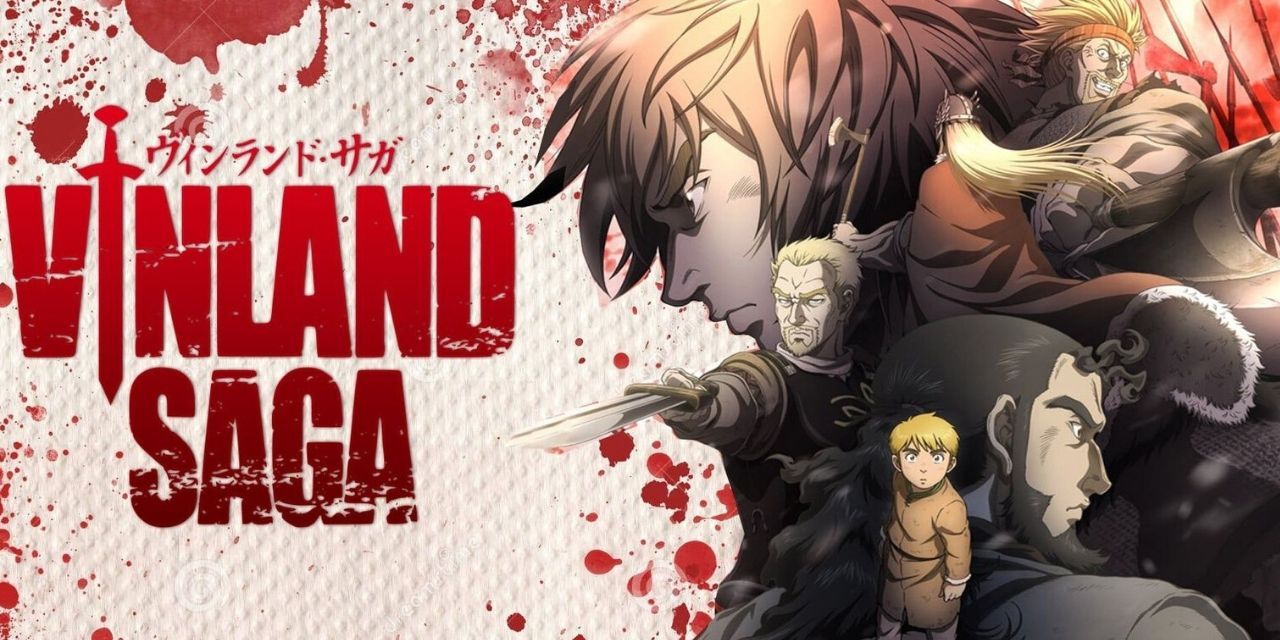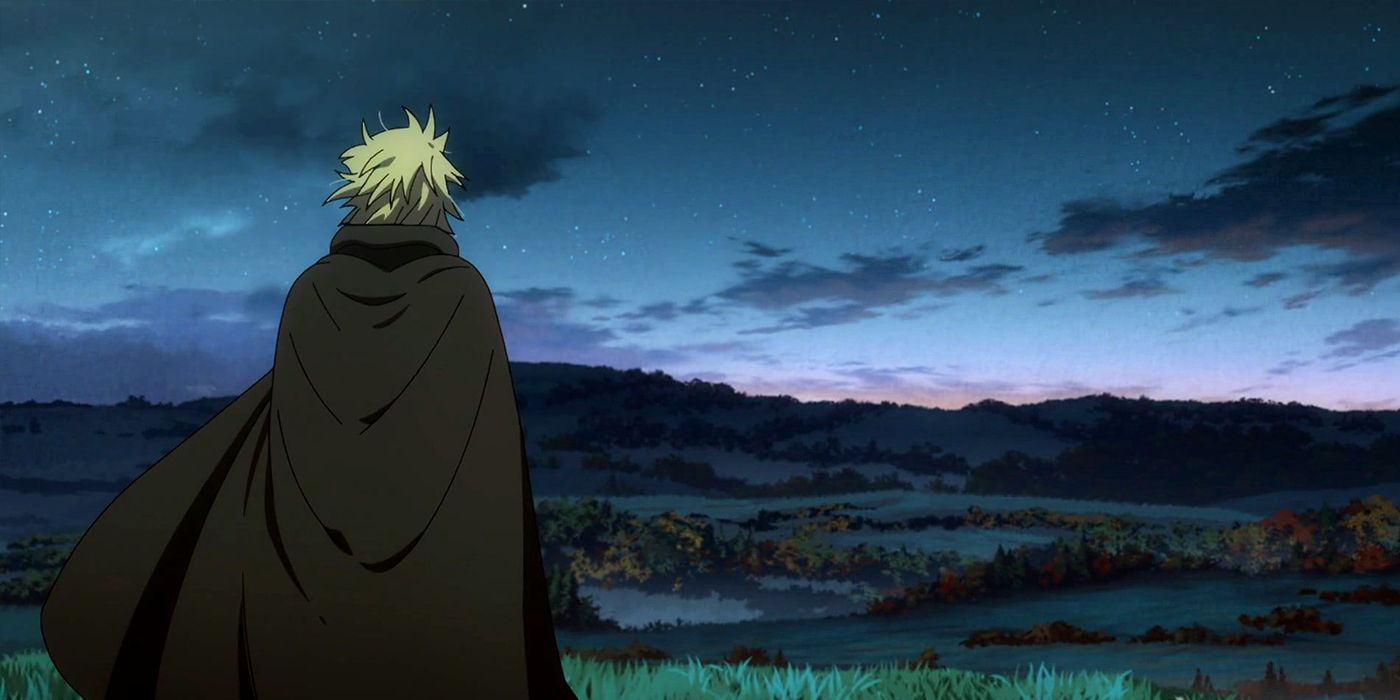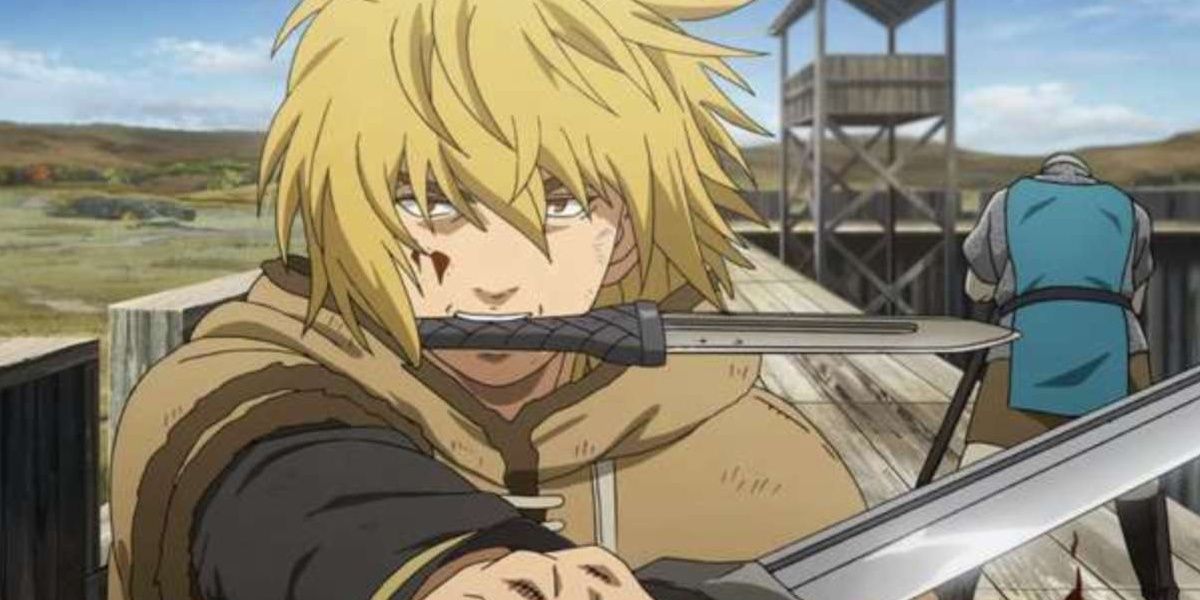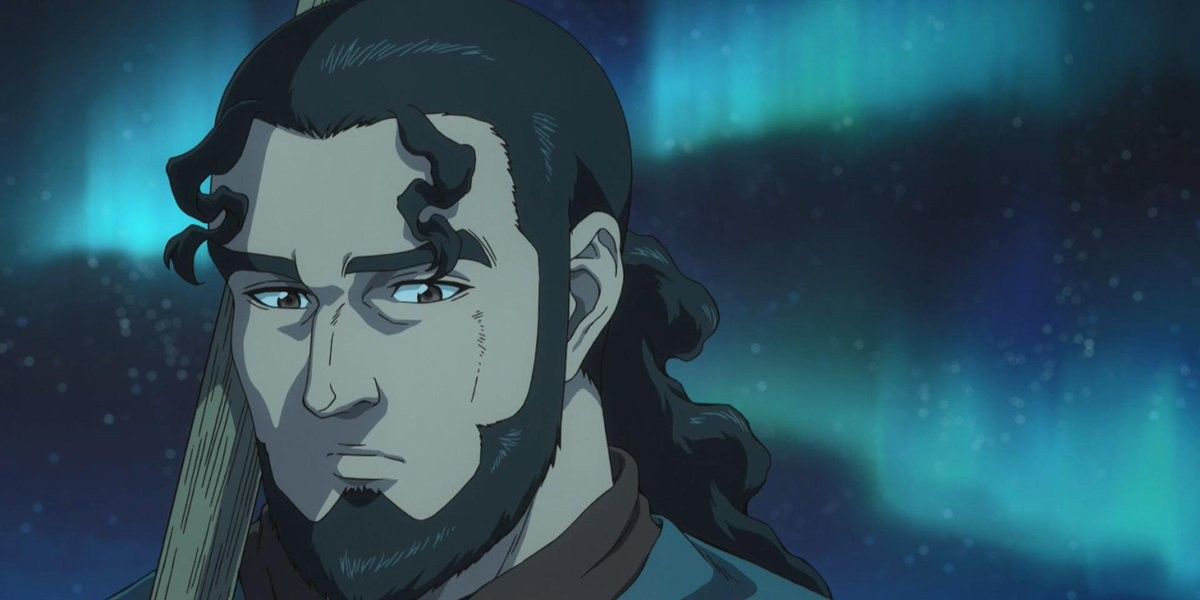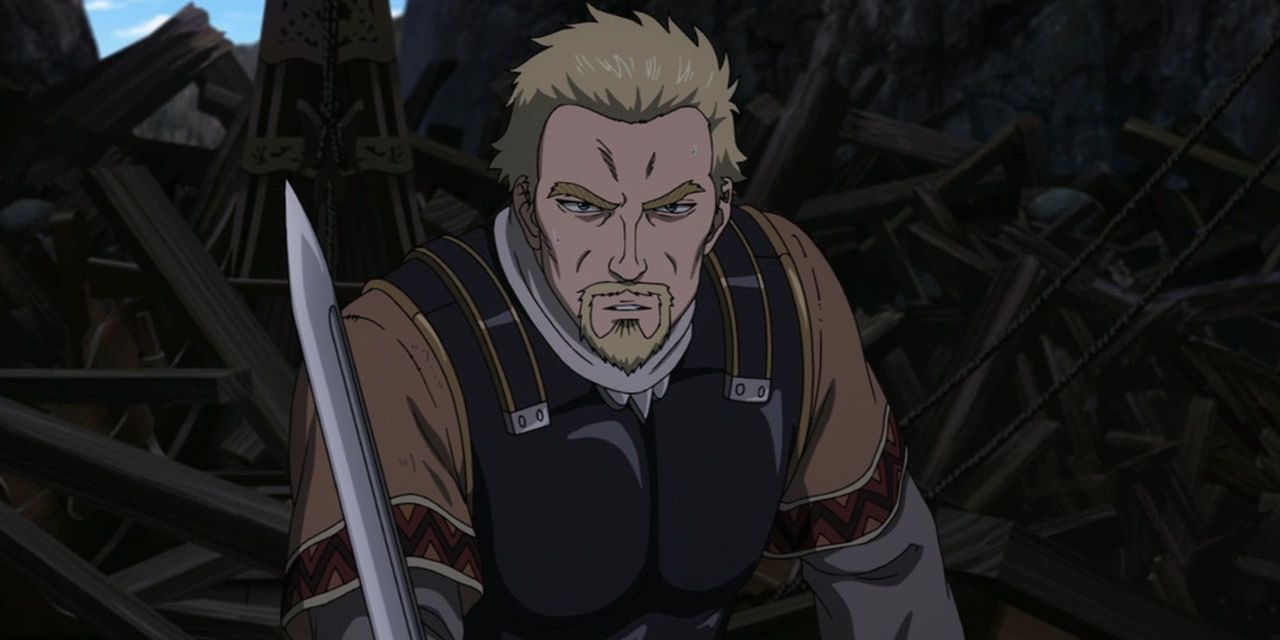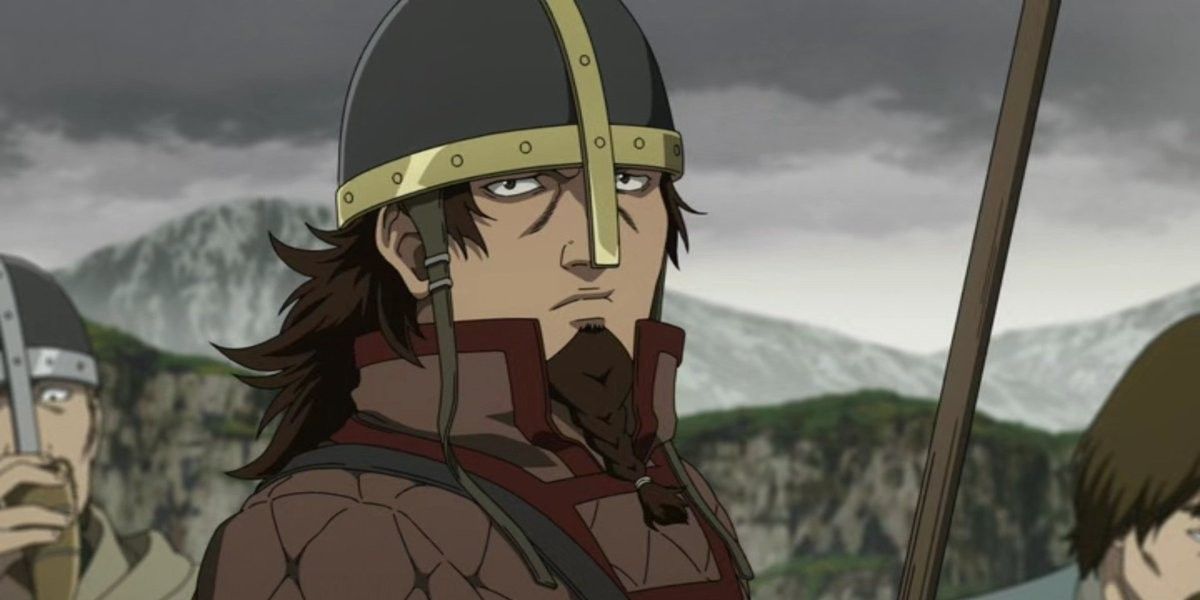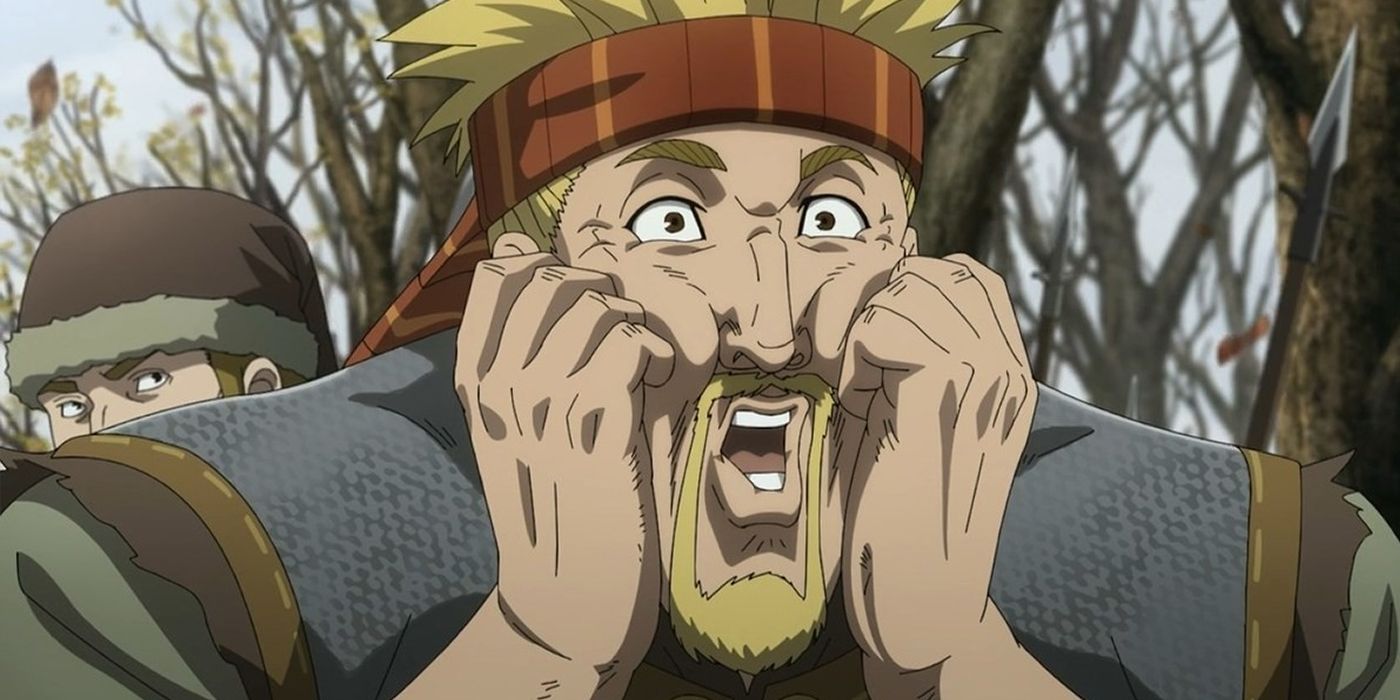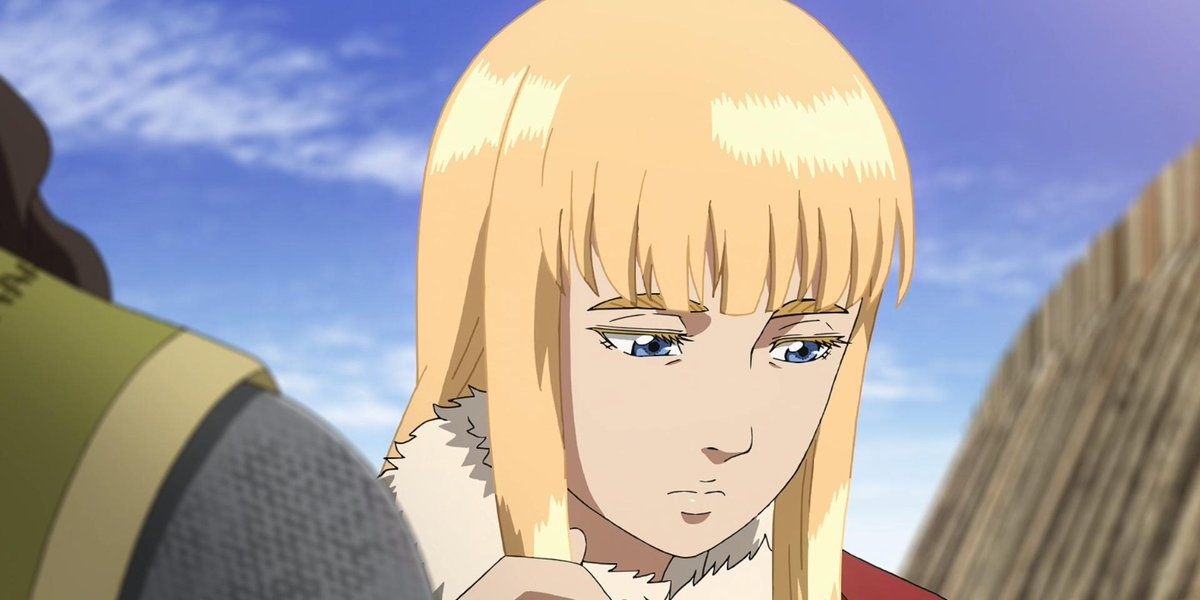Like samurai and spartans, Vikings have long provided fertile ground for creators around the world to base stories of war and bloodshed on. Creators like mangaka Makoto Yukimura, whose manga, Vinland Saga, was recently adapted into an anime series. Yukimura's story follows Thorfinn, son of the legendary warrior, Thors, who embarks on a vengeance mission that takes him from Iceland to England in the early 11th century. There, Prince Harald and Prince Canute, the heirs to the dying King Sweyn's throne in the Dane-conquered country, are locked in a battle over his throne.
Published by Kodansha, the Vinland Saga manga began serialization in 2005 and is still ongoing, while a continuation of the warmly-received anime series is slated to come from WIT Studio in the future. Its long-overdue jump to television couldn't have come at a better time: historically-inspired fantasies like the recently-concluded Game of Thrones and Amazon's more down-to-earth, Vikings, have been whetting viewers' appetite for more and more "hardcore" reimaginings of time of yore.
As an animation, Vinland Saga has more license then even Game of Thrones to lean full-tilt into magical realism. And yet, the series, to the untrained eye at least, might just be one of television's most well-researched. Yukimura, through his author's columns in the manga's collected volumes, revealed that he actually conducted trips to Iceland to help shape his story, combining several real, semi-fictionalized sagas together to form his own, unique epic.
What is fact and what is fiction in Vinland Saga, then? CBR sat down with Professor Carl Phelpstead, who teaches Old Norse-Icelandic and Old English literature at Cardiff University in Wales, to try and reconcile the story and principal characters in the anime with their real-world equivalents. From berserker warriors to hornless helmets -- it certainly seems like Yukimura's Icelandic holidays paid off.
What is Vinland?
CBR: Let's start with the basics. What is Vinland?
Carl Phelpstead: Vinland is a name that's quite recognizable, I mean, it's very recognizable to anyone who is a specialist in the field but it's also got a currency in the wider world. In some way, quite a problematic currency in the wider world. And it strikes somebody who knows about it that it's a very weird decision for a story that's based mainly in England to call it Vinland Saga.
CBR: Towards the start of the story we hear from a character called Leif. He's an explorer and he tells stories of Vinland and how he's traveled there. And then these stories, as Thorfinn grows older and becomes pulled into horrible wars and violence, starts dreaming about this imagined version of Vinland -- this warm, nirvana where people can be free. But, you're right, it's a bit odd that we never actually go there, at least for a long time, anyway. It's more of a theme or a motif early on.
Vinland Saga is apparently based on three sagas, The Falteyjarbók, The Saga of the Greenlanders and The Saga of Eric the Red. What can you tell me about them?
CP: Those two sagas, Greenlanders and Eric the Red are both preserved within The Falteyjarbók, but The Falteyjarbók is a big manuscript. They do both tell the discovery of Vinland -- we assume it's somewhere in North America -- by an explorer called Leif Erickson, the son of the Eric the Red that the saga is named after. And, to some extent, the Vinland that's preserved in those texts is a kind of an ideal place. One explanation of why it's called Vinland is because grapes grow there, so you can make wine... There are images of it being a land of plenty.
On the other hand, the Norse people who tried to find a settlement there had difficulties with the native inhabitants. And, in fact [...] they actually gave up the idea of having a permanent settlement there because of conflicts with the native inhabitants. So, it's not an ideal place or a utopia in that sense at all.
When I alluded to the fact that Vinland has problematic associations today, it's partly because a certain kind of North American white supremacist likes to invoke the memory of Vinland. These were the first Europeans in North America -- 500 years before Columbus -- so certain kinds of people invoke Vinland as a way of commenting on Europeans in North America. You might remember there was, for example, in the news a couple of years ago now, some murders in Portland, Oregon. And the white supremacist who had done this had posted on Facebook something like, "Hail Vinland."
So, there's a history of racists in America identifying with it, which is ironic given that it was a failure and [the settlements] didn't last.
Thorfinn
CBR: Let's talk about the main characters. There a lot of characters with "Thor" in their names. There's Thorfinn, the protagonist, and there's another character called Thorkell and Thorfinn's father is called Thors. I'm assuming that's obviously because of the Norse god?
CP: Yeah, there are an awful lot of characters in sagas that begin with the element of Thor. [...] The prominence of that element is to do with the fact that Thor seems to be the most widely worshipped of all the gods in pagan Iceland.
CBR: More than Odin?
CP: Yeah. We've got placename evidence primarily for that, and I suppose personal name evidence counts as well. We don't know a huge amount of how gods were worshipped in pre-Christian Iceland but what evidence we do have suggests that Thor was the most popular.
[...] Now, by the time [Vinland Saga] is set, Icelanders officially become Christian by then...
CBR: Yeah, there are some characters who are [Christian] in Vinland Saga.
CP: Denmark would have been Christian for quite a while then. So, the fact that these characters have got Thor in their name doesn't mean that they're worshippers of Thor or have any real association to him. The names arose when Thor was worshipped but then they've carried on being given the names long after the connection with the god has ceased.
CBR: Thorfinn is thought to be based on an early explorer called Thorfinn Karlsefni. Does that sound familiar?
CP: Yes, he's one of the main characters in these two sagas [The Saga of the Greenlanders and The Saga of Eric the Red]. I'm not sure I would have made the connection other than the name obviously being the same. The Thorfinn in the sagas never comes to England as far as I can remember.
He's an Icelandic merchant who arrives in Greenland, marries Gudrid, leads an expedition of three ships to Vinland, fights the native inhabitants, sees a creature called a uniped -- a strange, one-footed creature -- captures a couple of Native Americans and takes them to Greenland. Then he settles in Iceland.
CBR: Not quite as exciting as a vengeance plot.
Thors
CBR: Thors, Thorfinn's father, is an interesting character because even though he has some phenomenal combat prowess, he becomes a pacificist. He's a Jomsborg Viking who is supposedly killed in battle but escapes to Iceland for a quiet life and wanted the same for his son, which is interrupted when he's murdered -- supposedly as a punishment for desertion.
It's interesting to me because it doesn't line up with our common perception of Vikings as warrior invaders.
CP: So, the Jomsborg Vikings, they were like a brotherhood of Vikings centered in what's now the North Polish coast of the Baltic. There's a whole saga about the Jomsborg Vikings, which is all about their Viking activity, but it all takes place in the Baltic.
[...] As for faking his death and then carrying on living after a battle, that brings to mind another character, a King of Norway who appears in several different sagas -- a king called Olaf Tryggvason. The accepted historical account is that he died in battle in 995. [...] There's a battle for his kingdom, Norway, with his enemies and he loses and he's believed to have died but some of the sagas record accounts that he actually survived and some of them have him -- not return and try and win back his kingdom -- but instead he goes and lives as a kind of holy hermit in the Holy Land.
It's not quite the same as what's happening here but I wouldn't be surprised at all if the creator of the world was familiar with that story.
Askeladd
CBR: Askeladd Vinland Saga's main antagonist. He's the leader of a sort of band of marauders that Thorfinn ends up being part of -- only so he can get revenge on Askeladd for killing his father. He's revealed to be half-Danish, half-Welsh as the secret son of a Welsh Princess and Viking raider, and is supposedly based on Olaf the Peacock.
CP: Except that in the case of Olaf the Peacock it's not Welsh but Irish. His father is a Norse-speaker who buys a female slave called Melkorka who is supposedly mute, they have this child -- Olaf the Peacock -- and he takes her back with him to Iceland where his wife isn't very pleased that he's picked up this concubine abroad who he's had a son by! [laughs] One day he comes across her speaking to the baby and realizes she's not mute after all. She's just been pretending. But she speaks Irish to him and it turns out that she's actually an Irish Princess who has been abducted.
So, yes, this idea of a mixed Norse-speaking and Celtic-speaking background... yeah, I can see that. Later in life, Olaf visits Ireland to see his in-laws. You can read that story in Laxdæla Saga and he's called the Peacock because he, I think abroad, acquires some fancy clothing and goes strutting about it in Iceland. He cares a bit too much about his appearance.
CBR: Akesladd goes on to support Prince Canute... Does that match up with Olaf?
CP: No. Apart from this visit to Ireland, he mainly stays in Iceland. I think the creator has kind of picked up a few motifs and created something new from them.
Bjorn and Berserkers
CBR: I want to ask you about a character called Bjorn who's not massively important but he's notable for eating mushrooms that make him go into this unstoppable rage like he's on steroids or something. Anime is known for this archetype but does it come from Viking mythology?
CP: Yeah, there are berserkers. I mean, the word comes from Old Norse but then as far as I know they're not associated with mushrooms. They almost go into a kind of battle frenzy... They're almost, like, taken possession of or go into this strange trance or different kind of consciousness where they go into a berserker rage. And they're then great warriors but then it wears off and they become normal again.
The creator's clearly got some knowledge of this because berserkers are sometimes associated with bears. One possible meaning of berserker is "bear shirt." The idea that they put on animal skins and that somehow gave them a special power. The interesting thing here is that he's called Bjorn -- which is a perfectly normal Norse name -- but it also means bear. [...] In a way, what he's [Yukimura] done is try to rationalize the phenomenon by associating it with magic mushrooms and the way that they might be mind-altering.
There's a saga called The Saga of Hrolf Kraki, which features some berserker characters and a legendary character called Bödvar Bjarki who is a kind of bear warrior and some people have compared him with the character of Beowolf, the old English epic hero because his name means, literally "be wolf," in other words, a wolf that likes honey -- a bear. So, this idea of bear name names for warriors linking with the berserker idea is quite a strong one.
CBR: While we're on Bjorn, who wears a helmet: As far as I can remember, the famous horned helmets don't feature in Vinland Saga. I know that they're a common misconception about Vikings. Where did that all start?
CP: It all started with a mistranslation. It wouldn't make sense to go around fighting with great big horns sticking out of your helmet. It becomes a popular idea about Vikings in the 18th and 19th Centuries when they're frequently portrayed with horns. [...] There are images from the past that show characters with kind of horned helmets but they don't seem to be images of people as they would have fought. They might be some kind of ceremonial headgear.
CBR: While we're on the subject of misconceptions -- Vinland Saga has quite a funny scene where some Anglo Saxons ambush Vikings in England when they're having a bath by a river because they knew that Saturday was bath day for them. Is that true?
CP: Yeah, the Norse or Icelandic word for Saturday means "wash day," and supposedly that was indeed bath day.
Thorkell
CBR: Thorkell is a massive warrior who fights on the side of the English in the hopes of getting a proper fight from the Danes. He's probably about six or seven feet tall and there's a rumor that not even 4000 men are enough to take him down.
CP: There is a character called Thorkell the Tall and he appears in the Anglo Saxon chronicle and he is a member of the Jomsvikings... and, yes, he is associated with Canute. The Thorkell in Vinland Saga seems to be quite closely modeled on that one.
CANUTE
CBR: [Carl looks at a picture of Canute] This is Canute in Vinland Saga. The reason I wanted to show you him is because of his feminine look...
CP: Yeah, because I read the name Canute and then saw this and thought "but... Canute's a boy." [Laughs.]
CBR: Yeah! He's incredibly feminine-looking and, at first, he's also incredibly shy-seeming. He spends a few episodes early on not speaking at all, he just stands behind his entourage. And then, later on, when his main protector dies, he comes out of his shell a lot more and becomes more proactive about his mission. I was interested in whether there was some kind of basis in why he looks so feminine and delicate here. Was he written about in that way?
CP: Well, if you were talking to a historian who specialized in the period you might get a different answer but I don't remember anything that fits with this presentation of him. But it might be that I haven't read the right things.
I mean, he's a complex character that when he becomes king, he becomes king in Denmark and in England. In England especially he's associated with the Church so I can see that the show is getting the strong Christianity there. But on the other hand, he's also quite a fierce warrior as he conquers England -- as well as running Norway and Denmark.
CBR: Just one last general question: Why do you think Vikings have endured for so long in popular culture? I suppose they're like other famous warriors from other cultures in history, but I was wondering if you had any thoughts on why yourself.
CP: It might even go as far back as the actual Viking age when, in a way, they kind of exploded onto the scene. You had mainland Europe and these islands that were relatively secure, civilized communities and were suddenly subjected to invasion from Scandanavia. And, at that point, England and mainland Europe were Christian and the Scandanavians were pagans. So they were suddenly associated with this terrible military threat that was also associated with paganism.
And you can see in historical accounts what an impact this had on the current worldview and psyche that suddenly they're under attack from this very "other," alien people. And, of course, Vikings were very effective -- particularly in England where the country was under Danish rule. There's an appeal, I suppose, in that they're not just warriors, they're also adventurers. And there's a kind of a romantic appeal almost for them. Norse-speakers discovered Iceland and Greenland and then North America -- Vinland. They traveled all around Europe by ship, their ships gave them this mobility; they made contact through Russia and down the Black Sea and went Eastward, as well... So, they achieved a lot in terms of trade and exploration, as well as being a violent threat.
[...] And from the 19th Century onward, part of the interest is in the texts that are about the period. In particular, the sagas are very appealing -- they're good stories, they were quite popular in the Victorian period when they were first translated into English. The nature of the stories would have helped give [Vikings] popularity.
Some of this interview was edited for brevity.

